This Metro Park gets its name from a tree that has largely disappeared from North America: the American chestnut tree (Castanea dentata). The American chestnut tree dominated America’s forests in the east and in the Ohio Valley until the start of the 20th century. A true giant, the tree grew to be 100 to 150 feet tall (30 to 45 meters) and up to 10 feet (3 m) in diameter. It crowned the ridgeline of the Appalachian mountains; when in bloom, its white blossoms made the mountains look as though they were capped with snow.
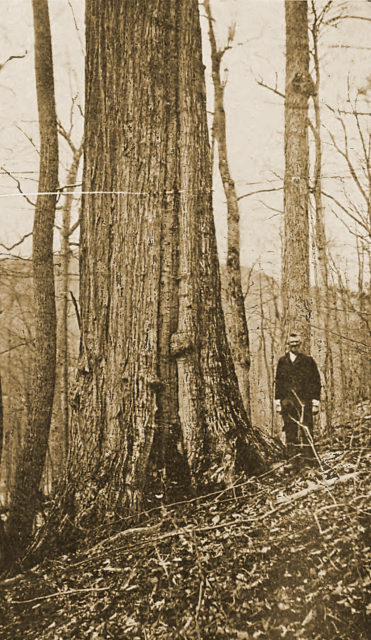
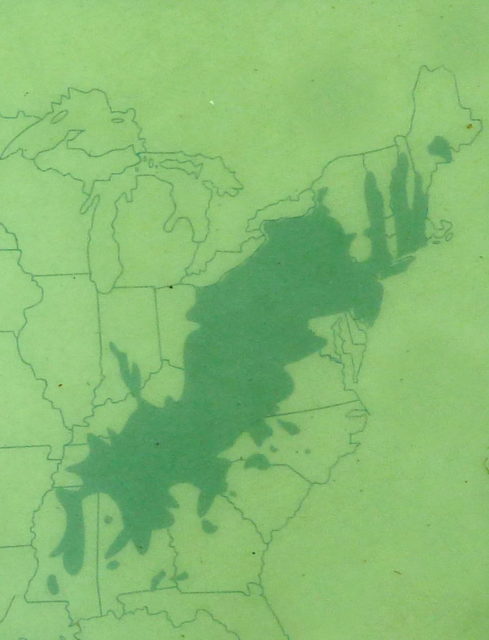
However in 1904 a type of fungus, Endothia parasitica, arrived from Asia. It started a Chestnut blight epidemic that killed three billion trees. A small number of trees escaped the blight, usually because they were living in isolation since they had been transplanted outside of their native range. However a few mature trees have been discovered within their native range, including in Ohio. Four mature, flowering trees have been discovered near Braceville, Ohio, and one mature Chestnut tree has been discovered in a marsh near Lake Erie (but the Ohio Department of Natural Resources is keeping its location secret). Sadly in Chestnut Ridge Metro Park, as in most of Ohio, if you see a remnant of this once great tree, it most likely will look like the shrubby, little thing pictured below. These are root sprouts of a Chestnut tree stump. Although the stump continues to put out sprouts, the sprouts continually become infected, so the specimen below will never resemble a real tree.
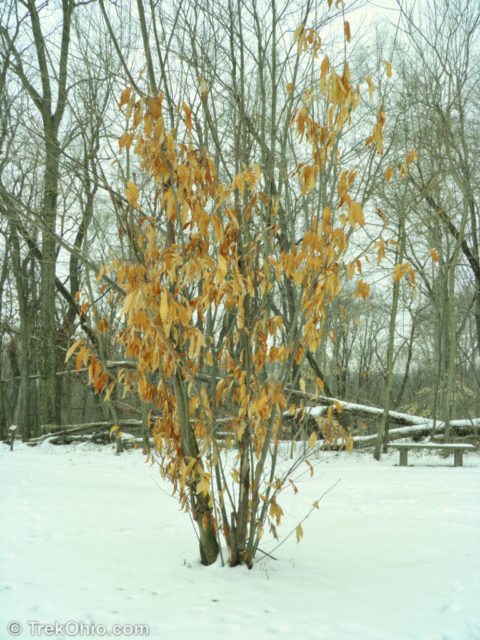
Although I’ve never seen a healthy specimen of this tree, perhaps some day I will. In Asia there is a smaller relative of the American Chestnut tree that has developed an immunity to the blight since the fungus and tree have co-existed for centuries. The goal of the American Chestnut Tree Restoration Project is to create a hybrid whose genetic lineage is 90% American Chestnut and 10% Chinese Chestnut with the hope that the hybrid will be tall and majestic like the American Chestnut, yet blight resistant like the Chinese Chestnut.
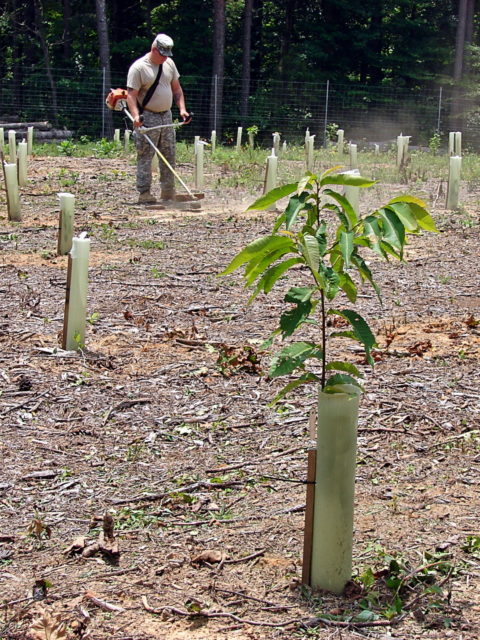
The young trees pictured here are blight-resistant, hybrid chestnut trees.
Turning from the park’s namesake to the park itself, Chestnut Ridge Metro Park is located in Fairfield County just southeast of Columbus. We’ve been there twice: in winter and in late spring. There is a hiking trail that’s a 2.4-mile loop. It starts at the parking lot and traverses a forested, 150-foot ridge, then skirts along the edge of a large meadow and finally passes through a small forest before returning to the parking lot. Chestnut ridge is considered to be the first ridge in the western foothills of the Appalachian mountains. There are a couple of viewing platforms just off the steeper portions of the trail as well as a boardwalk skirting the hillside. From one of the platforms you’re supposed to be able to see the Columbus skyline in the distance; however, we couldn’t see it. During our winter hike it was cloudy with poor visibility, and during our spring hike there was already too much foliage blocking our view. Since this area was once deforested and used for farmland, it is occasionally possible to see signs that people once lived here, such as the remnant of an orchard.
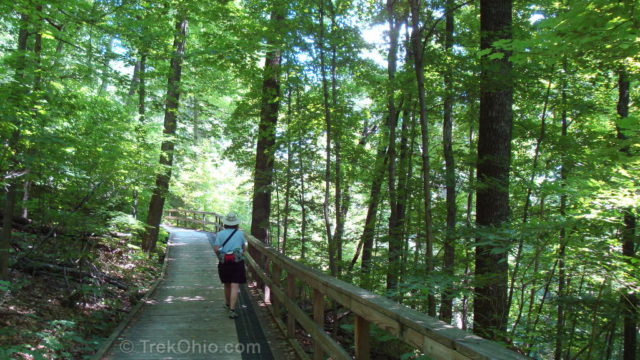
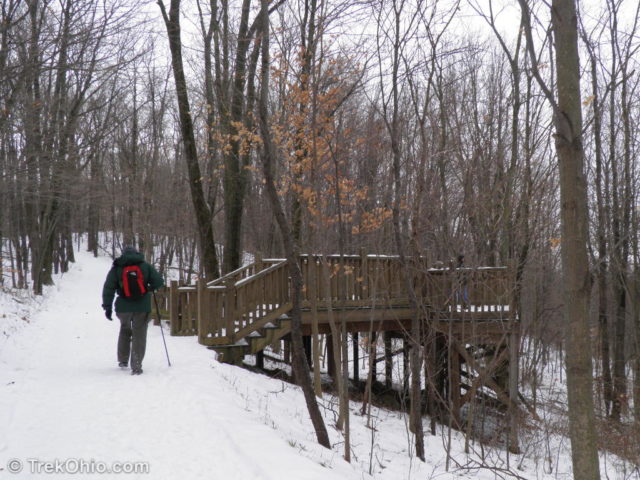
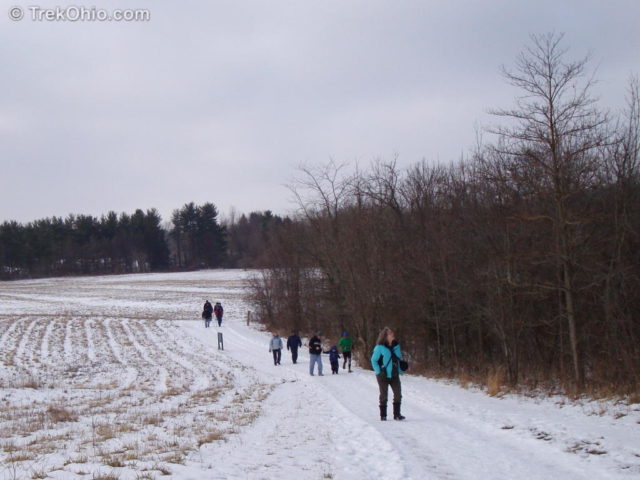
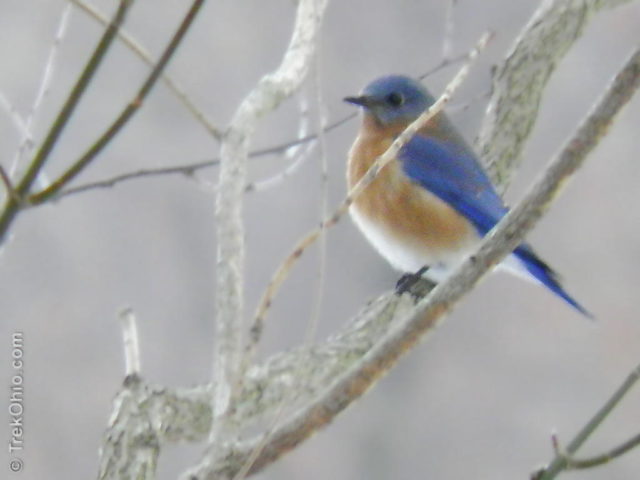
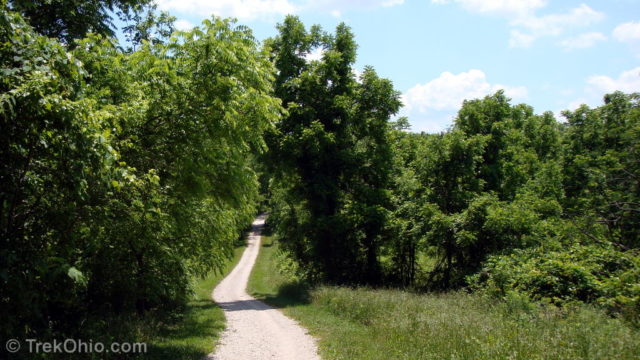
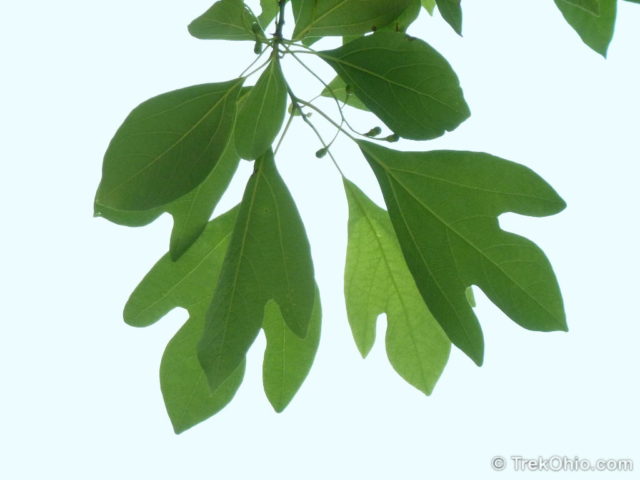
Not far from the parking lot there is a wetland with an observation platform, as well as nesting boxes for colonies of purple martins. The park’s mixture of habitat makes for excellent bird watching opportunities. The non-boardwalk portion of the trail is packed sand and gravel and seems to be very popular with joggers. In addition to this hiking trail there is a 7.5 mile trail dedicated exclusively to mountain biking. I’ve heard that it’s spectacular, but since we don’t mountain bike we haven’t tried it ourselves.
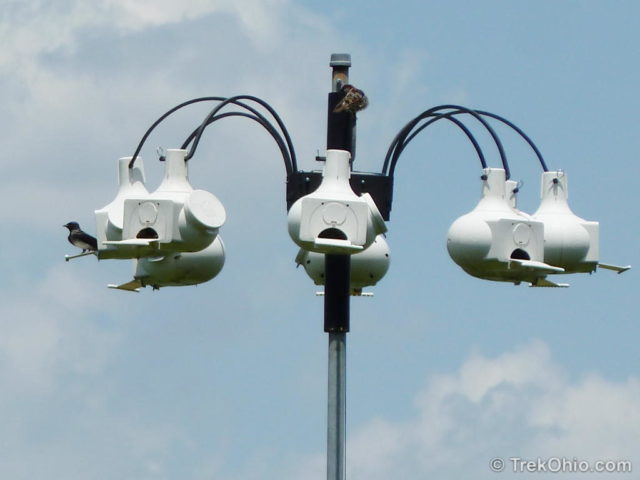
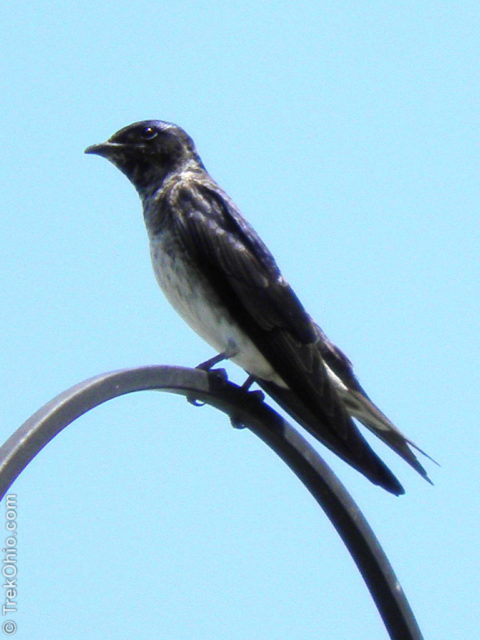
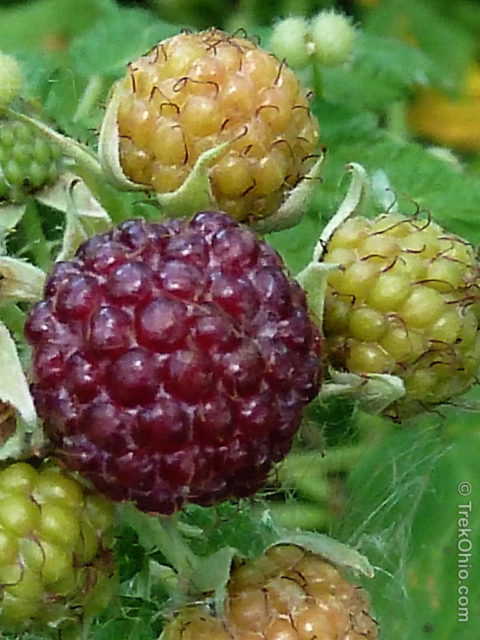
Other park facilities include picnic shelters, grills, rest-rooms, and a children’s playground. There’s also a fishing area that’s for the exclusive use of children and seniors (under 16 or over 59 years of age).
Additional information
- Chestnut Ridge Web Site
- Chestnut Ridge Trail Map
- Chestnut Ridge Metro Park Events Calendar
- TrekOhio: An Overview of Hiking Trails in Fairfield County
- TrekOhio Guide: Fairfield County Parks & Nature Preserves
- American Chestnut, published by Wikipedia
- ABC News: Reviving the Chestnut Tree
- American Chestnut Restoration Project, published by the U.S. Forest Service
- American Chestnut Seedling, published at Flickr by the U.S. Army Environmental Command
Location
- Address: 8445 Winchester Road N.W., Carroll, Ohio 43112
- Directions: From Columbus, take US 33 east, turn right on Winchester Rd, proceed 3 miles, the entrance is on the left.
- GPS Coordinates: 39.8104575, -82.7567171
- Google Maps: View on map or get directions
Your fishing rule is ridiculous.
Our website posts articles on hiking destinations throughout the state of Ohio, but we aren’t affiliated with any particular park system. So we have no influence on the fishing rules at Chestnut Ridge. However, if you would like to contact the Columbus and Franklin County MetroPark System, this is their contact page: http://www.metroparks.net/about-us/contact-us/
Fascinating… Thanks so much for sharing. Here’s to the return of the magnificent Chestnuts. ♥
Thanks, FeyGirl. My parents were old enough to witness the big die-off. I’m hoping we can bring them back too. 🙂